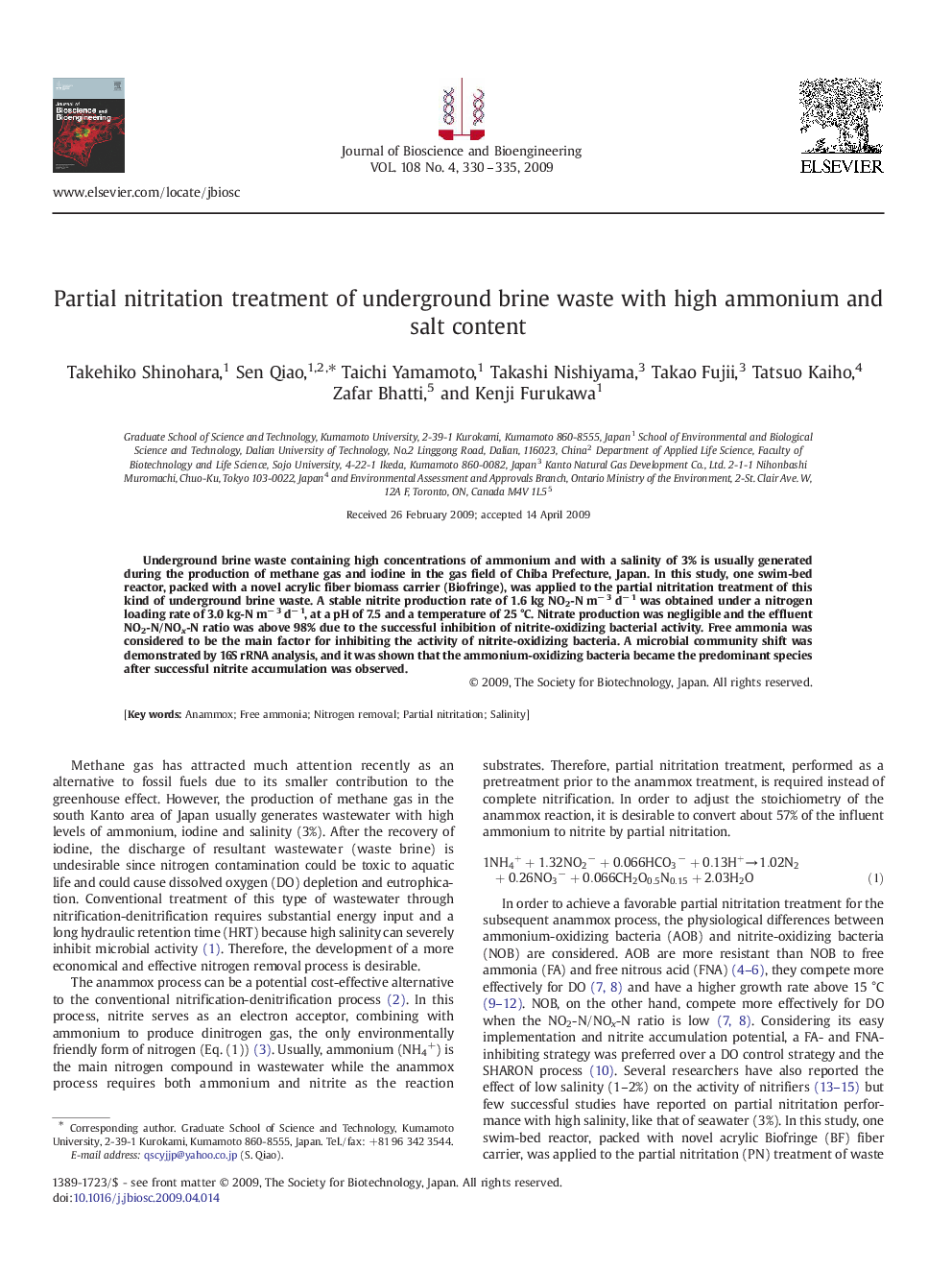| Article ID | Journal | Published Year | Pages | File Type |
|---|---|---|---|---|
| 21696 | Journal of Bioscience and Bioengineering | 2009 | 6 Pages |
Underground brine waste containing high concentrations of ammonium and with a salinity of 3% is usually generated during the production of methane gas and iodine in the gas field of Chiba Prefecture, Japan. In this study, one swim-bed reactor, packed with a novel acrylic fiber biomass carrier (Biofringe), was applied to the partial nitritation treatment of this kind of underground brine waste. A stable nitrite production rate of 1.6 kg NO2-N m− 3 d− 1 was obtained under a nitrogen loading rate of 3.0 kg-N m− 3 d− 1, at a pH of 7.5 and a temperature of 25 °C. Nitrate production was negligible and the effluent NO2-N/NOx-N ratio was above 98% due to the successful inhibition of nitrite-oxidizing bacterial activity. Free ammonia was considered to be the main factor for inhibiting the activity of nitrite-oxidizing bacteria. A microbial community shift was demonstrated by 16S rRNA analysis, and it was shown that the ammonium-oxidizing bacteria became the predominant species after successful nitrite accumulation was observed.
